MCQ Questions for Class 12 English Reading Comprehension with Answers
I. Read the passage given below:
(1) “Who doesn’t know how to cook rice? Cooking rice hardly takes time,” said my father. So, I challenged myself. I switched from news to YouTube and typed, “How to cook rice?” I took one and a half cups of rice. Since I didn’t have access to a rice cooker, I put the rice in a big pot. Firstly, the rice has to be washed to get rid of dust and starch. I thought I won’t be able to drain the rice and that it will fall out of the pot. I observed the chef as I swirled the rice around and used my dexterous hands to drain it, not once, not twice, but three times. I looked down at the sink and saw less than 50 grains that made their way out of the pot. Suffice to say, I was up to the mark.
(2) The video stated that the key to perfect rice is equal amounts of rice and water. I have heard that professionals don’t need to measure everything; they just know what the right amount is. But as this was my first time in the kitchen, I decided to experiment by not measuring the water needed for boiling the rice. I wanted the rice to be firm when bitten, just like pasta. I don’t enjoy the texture of mushy rice. It has to have that chutzpah; it has to resist my biting power just for a bit before disintegrating.
(3) After what seemed like 10 minutes, all the water disappeared. I went in to give it a good stir. To my surprise, some of the rice got stuck to the pot. I tried to scrape it off but to no avail. At the same time, there was a burning smell coming from it. I quickly turned the stove off. “What have you done to the kitchen?” My mother shouted while coming towards the kitchen. I managed to ward her off.
(4) Finally, when the time came to taste my creation, I was surprised! It wasn’t bad at all. The rice had the desired
consistency. Sure, a little more salt would’ve been better, but I just added that while eating. The experience was fairly rewarding and memorable. It taught me a new sense of respect for those who cook food on a regular basis at home or are engaged in gourmet creations professionally.
Question 1.
Father’s question to the narrator, about knowing how to cook rice, was intended to
(A) criticize the narrator’s lack of abilities.
(B) make the process sound simple.
(C) encourage the narrator to take up cooking.
(D) showcase his own expertise in cooking rice.
Answer:
(B) make the process sound simple.
![]()
Question 2.
“I switched from news to YouTube …” Pick the option in which the meaning of’switch(ed)’ is NOT the same as it is in the passage.
(A) He switched on the radio to listen to the news while having dinner.
(B) “Forget these diet supplements and switch to yoga, if you want a true sense of well-being.”
(C) Mom switched to reading fiction recently because she was bored with cook-books.
(D) The company will switch the trucks to other routes to bring down city pollution.
Answer:
(A) He switched on the radio to listen to the news while having dinner.
Question 3.
Based on your understanding of the passage, choose the option that lists the correct sequence of the process.
1. Use water to wash the rice.
2. Repeat the process three times.
3. Drain the water off.
4. Put rice in a utensil.
5. Swirl the water in and around the rice.
(A) 4,2,1,3,5
(B) 1,3,2,5,4
(C) 4,1,5,3,2
(D) 5,1,2,4,3
Answer:
(C) 4,1,5,3,2
Question 4.
The narrator says that he has dexterous hands. He would have had a problem had it been the opposite. NOT BEING dexterous means, being
(A) uncomfortable
(B) clumsy
(C) unclear
(D) clueless
Answer:
(B) clumsy
![]()
Question 5.
Which option represents the correct ratio of water to rice for cooking ‘perfect rice’?

(A) Image 1
(B) Image 2
(C) Image 3
(D) Image 4
Answer:
(A) Image 1
Question 6.
According to the passage, the fact that the narrator risked experimentation, on his maiden attempt in the kitchen, shows that he was
(A) conscientious
(B) nervous
(C) presumptuous
(D) courteous
Answer:
(C) presumptuous
Question 7.
Pick the option showing the CORRECT use of the word ‘chutzpah’.
(A) It is the court7s duty to dispense chutzpah to everyone irrespective of caste or creed.
(B) The speaker may not have much of a stage presence, but you’ve got to admit she’s got chutzpah.
(C) I could crack the code easily which proved me to be a chutzpah and I was the only one who could do so.
(D) After his father’s demise, the daughter took over the family’s chutzpah to save it from disaster.
Answer:
(B) The speaker may not have much of a stage presence, but you’ve got to admit she’s got chutzpah.
![]()
Question 8.
Pick the option that correctly states what DID NOT happen after the writer checked on the rice.
(A) Turning the stove off
(B) Being taken aback at the condition of rice
(C) Forgetting to scrape the stuck rice
(D) Smelling the delicious aroma of cooked rice
Answer:
(D) Smelling the delicious aroma of cooked rice
Question 9.
Pick the option that correctly lists the final feelings of the writer with reference to the cooking experience.
1. frustrating
2. amusing
3. satisfying
4. disillusioning
5. exacting
6. enlightening
(A) 1 and 4
(B) 2 and 5
(C) 3 and 6
(D) 1 and 3
Answer:
(D) 1 and 3
II. Read the passage given below:Donated Organs and their Transportation
(1) Once an organ donor’s family gives its consent and the organs are matched to a recipient, medical professionals are faced with the onerous challenge of transporting organs while ensuring that the harvested organ reaches its destination in the shortest possible time. This is done in order to preserve the harvested organs which involves the police especially the traffic police department.
(2) The traditional method of transporting organs by road is referred to as a “green corridor”. The first green corridor in India was created by Chennai Traffic Police in September 2008 when they accomplished their task of enabling an ambulance to reach its destination within 11 minutes during peak hour traffic. That organ saved a nine-year-old girl whose life depended on the transplant. Similarly, such green corridors have been created by traffic police of various cities such as Pune, Mumbai, Delhi NCR etc.
(3) Experts point out the lack of a robust system to transport organs to super-speciality hospitals in least possible time. National Organ and Tissue Transplant Organisation (NOTTO), the country’s apex organ donation agency, is now framing a proposal to airlift cadaver organs and will send a report to the Union Health Ministry. “Cadaver organs have a short life and so transplant should be done within a few golden hours.” Director (NOTTO) expressed, “Therefore, we are preparing a proposal for airlifting organs at any given moment.”
(4) Most states do not have enough well-trained experts to retrieve or perform transplant procedures. Also, there
is an acute shortage of advanced healthcare facilities to carry out a transplant. So, it is referred to other big centres in metropolitan cities. Organs retrieved from Aurangabad, Indore, Surat and Pune are sent to Mumbai as these cities do not have super-speciality healthcare centres, informed officials.
(5) “In India, about fifty thousand to one lakh patients are suffering from acute heart failure and need heart transplant at any point of time. In a private set-up, a heart transplant costs ₹ 15-20 lakhs, which is followed up by postoperative medication of about₹ 30,000 per month lifelong.” Moreover, the risk factor is great hindrance.
Based on your understanding of the above passage, answer any eight of the questions given below by choosing the most appropriate option:
Question 1.
The first green corridor in India was created in:
(A) New Delhi
(B) Chennai
(C) Mumbai
(D) Pune
Answer:
(B) Chennai
![]()
Question 2.
The onerous task that the author is talking about in para 1 is :
(A) finding organ donors.
(B) finding doctors capable of performing transplants.
(C) to carry the harvested organ in the shortest possible time.
(D) to arrange the requisite facilities for the transplant.
Answer:
(C) to carry the harvested organ in the shortest possible time.
Question 3.
Most of the people do not go for the heart transplant as:
(A) it is very risky.
(B) it is very painful.
(C) it may cause death of the recipient.
(D) the cost is prohibitive.
Answer:
(B) it is very painful.
Question 4.
Most states refer organ transplant cases to big hospitals because:
(A) they don’t have well trained experts.
(B) the patients don’t trust local doctors.
(C) the state hospitals are very crowded.
(D) they don’t have a pool of harvested orgAnswer:
Answer:
(A) they don’t have well trained experts.
Question 5.
Apart from Chennai, where were other green corridors created?
(A) Delhi NCR
(B) Pune
(C) Mumbai
(D) All of the above
Answer:
(D) All of the above
![]()
Question 6.
How much does a heart transplant cost a patient in a private hospital?
(A) Rs. 15-20 lakhs
(B) Rs. 20 lakhs
(C) Rs. 20-25 lakhs
(D) None of these
Answer:
(A) Rs. 15-20 lakhs
Question 7.
Pick out the word/phrase from the passage which is similar in meaning to ‘save’ (Para 1)
(A) onerous
(B) preserve
(C) harvest
(D) retrieve ’
Answer:
(B) preserve
Question 8.
Pick out the word/phrase from the passage which is opposite in meaning to ‘destructed’ (Para 2)
(A) accomplished
(B) created
(C) transplanted
(D) advanced
Answer:
(B) created
![]()
Question 9.
What is meant by the word ‘retrieve’ (Para 4)
(A) get back
(B) ecover
(C) set right
(D) regain
Answer:
(C) set right
III. Read the passage given below:
(1) All of Earth’s oceans share one thing in common “plastic pollution”. When people litter, or when the trash is not properly disposed off, things like plastic bags, bottles, straws, foam and beverage cups get carried to the sea by winds and waterways. About 80 per cent of ocean plastic originates on land. The rest comes from marine industries such as shipping and fishing.
(2) In 2015, engineer Jenna Jambeck at the University of Georgia and other researchers calculated that at least 8 million tons of plastic trash are swept into the ocean from coasts every year. That’s the equivalent of a full garbage truck of plastic being dumped into the sea every minute. If current trends in plastic production and disposal continue, that figure will double by 2025. A report published by the World Economic Forum last year predicts that by 2050, ocean plastic will outweigh all the fish in the sea.
(3) In today’s world, plastic is everywhere. It’s found in shoes, clothing, household items, electronics and more. There are different types of plastics, but one thing they all have in common is that they’re made of polymers-large molecules made up of repeating units. Their chemical structure gives them a lot of advantages: they’re cheap and easy to manufacture, lightweight, water-resistant, durable and can be moulded into nearly any shape.
(4) Sea turtles eat plastic bags and soda-can rings, which resemble jellyfish, their favourite food. Seabirds eat bottle caps or chunks of foam cups. Plastic pieces may make an animal feel full, so it doesn’t eat enough real food to get the nutrients it needs. Plastic can also block an animal’s digestive system, making it unable to eat.
(5) Plastic and its associated pollutants can even make it into our own food supply. Scientists recently examined fish and shellfish bought at markets in California and Indonesia. They found plastic in the guts of more than a quarter of samples purchased at both locations; in organisms that people eat whole, such as sardines and oysters, that means we’re eating plastic too. In larger fishes, chemicals from plastic may seep into their muscles and other tissues that people consume.
(6) One way to keep the ocean cleaner and healthier is through clean-up efforts. A lot of plastic waste caught in ocean currents eventually washes up on beaches. Removing it prevents it from blowing out to sea again. Beach clean-up is ocean clean-up.
(7) Clean-up efforts can’t reach every corner of the ‘ocean or track down every bit of micro-plastic’. That means it’s critical to cut down on the amount of plastic that reaches the sea in the first place. Scientists are working towards new materials that are safer for the environment. For example, Jambeck and her colleagues are currently testing a new polymer that breaks down more easily in seawater.
Based on your understanding of the above passage, answer any eight of the questions given below by choosing the most appropriate option:
Question 1.
Percentage of ocean plastic that originates from land is ———.
(A) 20%
(B) 50%
(C) 80%
(D) 25%
Answer:
(C) 80%
Question 2.
Plastic is not biodegradable because it is made up of ——-.
(A) low atomic particles.
(B) tiny particles.
(C) strong big particles.
(D) large molecule polymers.
Answer:
(D) large molecule polymers.
Question 3.
Scientists bought fish and shellfish for examination at markets in:
(A) China and Russia
(B)Pakistan and Afghanistan
(C) California and Indonesia
(D) Australia and Brazil
Answer:
(D) Australia and Brazil
![]()
Question 4.
Which properties make plastic great for consumer goods?
(A) Biodegradability.
(B) Durability.
(C) The dyes and flame retardants.
(D) Ability of chemical absorption.
Answer:
(B) Durability.
Question 5.
Which articles made of plastic generally cause pollution in the sea?
(A) Discarded plastic bags
(B) Beverage cups
(C) Soda can-rings
(D) All of these
Answer:
(D) All of these
Question 6.
Which features do all kinds of plastic have?
(A) Easy to manufacture and easy to dispose.
(B) Water resistant.
(C) Difficult to mould into any shape,
(D) Non-durability.
Answer:
(B) Water resistant.
Question 7.
What is the biggest impact of plastic pollution on sea life?
(A) Plastic eating makes them feel full.
(B) Plastic blocks the animal’s digestive system.
(C) Plastic cuts sea animal’s skin.
(D) All of these
Answer:
(D) All of these
Question 8.
How are larger fish affected by plastic?
(A) They can get entangled in plastic netting.
(B) Plastic may lead them to starvation.
(C) Plastic is found in their guts.
(D) Plastic may go into their muscles and other tissues
Answer:
(D) Plastic may go into their muscles and other tissues
![]()
Question 9.
What is the ultimate way to clean up an ocean?
(A) The beach clean-up.
(B) ban of plastic items.
(C) prohibition of seabirds.
(D) No food supply in surrounding area.
Answer:
(A) The beach clean-up.
IV. Read the passage given below:
(1) The sage of science, Einstein, was sitting in a depressive and pensive mood one evening. His eyes were brimming with tears. The pain was evident on his face. He peeped out of the window of his room. The sun had set a few minutes back. The sky was filled with a reddish glow. At this sunset, he felt that it was humanity that had sunk into devilish darkness and the reddish glow in the sky was the blood of humanity spilling all over the sky from earth. With tired steps, he walked back to his chair and settled down. It was the 9th of August 1945. Three days back, he had felt the same agony as if someone had torn him apart. He was deeply hurt and depressed when he heard on the radio that America had dropped an atom bomb on the Japanese city, Hiroshima. Today, within three days another bomb was dropped on another city, Nagasaki and lakhs of people had been killed.
(2) He could not sleep that night. Lying down, he was thinking how he had drawn the attention of the then American President Roosevelt towards the destructive powers of an atomic bomb. He had thought that this would be used to scare Hitler and put an end to the barbarism that Hitler was up to. However, Roosevelt kept him in the dark and made false promises. Eventually, he had abused Einstein’s equation of E= me2 that resulted in the destructive experiments. His actions had made science and scientists as murderers. Einstein kept on thinking for a long time. Eventually, he slipped into sleep. When he woke up at dawn, there was a new dawn in him too. The atomic threat had transformed his heart.
(3) The next day, he decided to disassociate himself from the scientific policy of the government and all governmental institutions. He decided to open educational institutions for children, adolescents, and youth-institutions where along with science, spirituality will be compulsorily taught.
(4) To inaugurate this institution, he had invited two great philosophers, Bertrand Russell and Albert Schweitzer. Ten other great scientists who had won Nobel Prizes in different fields were also invited. They all saw a different Einstein, not a great scientist but a sage in him. The institution was opened by garlanding a photo of Mahatma Gandhi. While garlanding the Mahatma, he became emotional and said with a lump in his throat, ‘I bow down to the great man who fought for the independence of his country through nonviolence. He could do so because he was a truthful man and true spiritualist’.
(5) Those who teach science should be taught spirituality too. Without harmony between science and spirituality, the destruction would continue unabated. A few years after this institution was built, a Japanese delegation came to meet him. Einstein broke down in the meeting and said, ‘You can give me any punishment and I will accept it. Anyway, I have decided to lead my life in penitence’. The Japanese were moved by his sincerity and forgot their grief.
Question 1.
Which musical instrument did Einstein play when he was in grief?
(A) Harmonium
(B) Guitar
(C) Violin
(D) Flute
Answer:
(C) Violin
Question 2.
Einstein came to know that America had dropped an atom bomb on the Japanese city, Hiroshima through ‘
(A) television
(B) newspaper
(C) radio
(D) a telephonic message
Answer:
(C) radio
Question 3.
Einstein said to the Japanese delegation,
(A) ‘You can give me any punishment and I will accept it.’
(B) ‘I am not at fault.’
(C) ‘What could I do?’
(D) ‘The President didn’t agree to my advice.’
Answer:
(A) ‘You can give me any punishment and I will accept it.’
Question 4.
What did Einstein do to show his displeasure over the atomic attack?
(A) He decided to open a science laboratory.
(B) He decided to establish an Educational Institution.
(C) He disassociated himself from governmental institutions.
(D) He invited two great philosophers.
Answer:
(B) He decided to establish an Educational Institution.
![]()
Question 5.
The depressive mood of Einstein was compared to:
(A) Sunrise
(B) Sunset
(C) Devilish darkness
(D) Tired steps
Answer:
(B) Sunset
Question 6.
What made Einstein more restless and sleepless?
(A) When America was hit by atomic bomb
(B) When Nagasaki was hit by atom bomb
(C) When atom bomb was dropped on Hiroshima by America
(D) Both (B) and (C)
Answer:
(D) Both (B) and (C)
Question 7.
Pick out the event after which Einstein could not control himself and tried to play instrument to divert his mind.
(A) After getting the news of atomic attack
(B) By inventing sad notes
(C) Over barbarism of Hitler
(D) When he was pained by false promises
Answer:
(A) After getting the news of atomic attack
Question 8.
Which event in 1945, according to Einstein, turned science and scientists into murderers?
(A) The wrong use of Einstein’s equation
(B) False promises of Roosevelt
(C) The dropping of atom bombs on the two Japanese cities
(D) None of these
Answer:
(C) The dropping of atom bombs on the two Japanese cities
Question 9.
Einstein invited which philosopher to inaugurate the new institution?
(A) Bertrand Russell
(B) Albert Schweitzer
(C) Both (A) and (B)
(D) Neither (A) nor (B)
Answer:
(C) Both (A) and (B)
V. Read the passage given below:
(1) When you grow up in a place where it rains for five months a year, wise elders help you to get acquainted with the rain early. They teach you that it is ignorance to think that it is the same rain falling every day. Oh no! the rain is always doing different things at different times. There is rain that is gentle, and there is also rain that falls too hard and damages the crops. Hence, pray for the sweet rain that helps the crops to grow.
(2) The monsoon in the Naga Hills goes by the native name, Khuthotei (which means the rice-growing season). It lasts from May to early or mid-October. The local residents firmly believe that Durga Puja in October announces the end to rain. After that, one might expect a couple of short winter showers, and the spring showers in March and April. Finally, comes the ‘big rain’ in May; proper rainstorms accompanied by heart-stopping lightning and ear-splitting thunder. I have stood out in storms looking at lightning arc across the dark skies, a light-and-sound show that can go on for hours.
(3) This is the season when people use the word sezuo and suzu to refer to the week-long rains, when clothes don’t dry and smell of mould, when fungus forms on the floor and when you can’t see the moon or the stars.
(4) The rains are also called after flowering plants and people believe that the blossoming of those plants draws
out rain. Once the monsoon sets in, field work is carried out in earnest and the work of uprooting and transplanting paddy in flooded fields is done. The months of hard labour are June, July and August. In August, as the phrogo plant begins to bloom, a rain will fall. This August rain, also called phrogo, is a sign that the time for cultivation is over. If any new grain seeds are sown, they may not sprout; even if they do sprout, they are not likely to bear grain. The rain acts as a kind of farmer’s almanac. .
(5) The urban population of school-goers and office-goers naturally dislikes the monsoon and its accompanying problems of landslides, muddy, streets and periodic infections. For non-farmers, the month of September can be depressing, when the rainfall is incessant and the awareness persists that the monsoons will last out till October. One needs to have the heart of a farmer to remain grateful for the watery days, and be able to observe from what seems to
the inexperienced as a continuous downpour-many kinds of rain. Some of the commonly known rain-weeks are named after the plants that alternately bloom in August and September. The native belief is that the flowers draw out the rain.
(6) Each rain period has a job to fulfil: October rain helps garlic bulbs to form, while kumunyo rain helps the rice bear grain. Without it, the ears of rice cannot form properly. End of October is the most beautiful mortth in the Naga Hills, as the fields turn gold and wild sunflowers bloom over the slopes, all heralding the harvest. Prayers go up for protecting the fields from storms, and the rains to retreat because the grains need to stand in the sun and ripen. The cycle nears completion a few weeks before the harvest, and the rain does retreat so thoroughly from the reaped furrows that the earth quickly turns hard. The months of rain becomes a distant memory until it starts all over again.
Based on your understanding of the above passage, answer any eight of the questions given below by choosing the most appropriate option:
Question 1.
The rains are called after flowering plants because:
(A) heavy rains kill plants.
(B) flowers grow in the rainy season.
(C) it is believed that the plants bring the rain.
(D) flowers grow all the year-round.
Answer:
(C) it is believed that the plants bring the rain.
![]()
Question 2.
The rain is like a calendar for farmers because:
(A) it tells them when to sow and when to harvest.
(B) it tells them the birthdays of their children.
(C) each month has a time for plantation.
(D) different kinds of rains tell different things.
Answer:
(B) it tells them the birthdays of their children.
Question 3.
People who live in cities don’t like rain because:
(A) it brings mud and sickness with it.
(B) they are not bothered about the farmers.
(C) they don’t like the plants that grow during the rain.
(D) going shopping becomes difficult.
Answer:
(A) it brings mud and sickness with it.
![]()
Question 4.
People pray asking the rain to retreat because:
(A) the fungus and mold need to dry.
(B) children don’t get a chance to play
(C) the crops need the sun and heat to ripen.
(D) they like to pray.
Answer:
(C) the crops need the sun and heat to ripen.
Question 5.
What do elders want you to understand about rains?
(A) That rains are always welcomed.
(B) That the same rain falls every day.
(C) That the rain always damages the crops.
(D) That rain always does different things at different times.
Answer:
(D) That rain always does different things at different times.
Question 6.
What helps the crops to grow?
(A) Gentle rain.
(B) Prayer for rain.
(C) Rain that falls too hard.
(D) Easy rain.
Answer:
(A) Gentle rain.
Question 7.
What does Durga Puja mean to the farmers of the Naga hills?
(A) It is a holy festival for them.
(B) It announces the end of rain.
(C) They expect, thereafter, water showers.
(D) They look for light and sound show during the festival.
Answer:
(B) It announces the end of rain.
Question 8.
What kind of rain is called seize?
(A) Winter monsoon
(B) Summer rains
(C) Weak long rain
(D) Short winter shower
Answer:
(C) Weak long rain
![]()
Question 9.
When can one see sunflowers blowing all over the Naga Hills?
(A) From May to October
(B) In September-October
(C) End of October
(D) During the retreat of rain
Answer:
(C) End of October
VI. Read the passage given below :
(1) Every morning Ravi gives his brain an extra boost. We’re not talking about drinking strong cups of coffee or playing one of those mind-training video games advertised all over Facebook. “I jump onto my stationary bike and cycle for 45 minutes to work,” says Ravi. “When I get to my desk, my brain is at peak activity for a few hours.” After his mental focus comes to a halt later in the day, he starts it with another short spell of cycling to be able to run errands.
(2) Ride, work, ride, repeat. It’s a scientifically proven system that describes some unexpected benefits of cycling.
In a recent study in the Journal of Clinical and Diagnostic Research, scientists found that people scored higher on tests of memory, reasoning, and planning after 30 minutes of spinning on a stationary bike than they did before they rode the bike. They also completed the tests faster after pedalling. ‘
(3) Exercise is like fertilizer for your brain. All those hours, spent on exercising your muscles, create rich capillary beds not only in leg and hip muscles, but also in your brain. More blood vessels in your brain and muscles mean more oxygen and nutrients to help them work. When you pedal, you also force more nerve cells to fire. The result : you double or triple the production of these cells — literally building your brain. You also release neurotransmitters (the messengers between your brain cells) so all those cells, new and old, can communicate with each other for better, faster functioning. That’s a pretty profound benefit to cyclists.
(4) This kind of growth is especially important with each passing birthday, because as we age, our brains shrink and those connections weaken. Exercise restores and protects the brain cells. Neuroscientists say, “Adults who exercise display sharper memory skills, higher concentration levels, more fluid thinking, and greater problem-solving ability than those who are sedentary.”
(5) ycling also elevates your mood, relieves anxiety, increases stress resistance, and even banishes the blues. “Exercise works in the same way as psychotherapy and antidepressants in the treatment of depression, maybe better,” says Dr. Manjari. A recent study analyzing 26 years of research finds that even some exercise — as little as 20 to 30
(6) Remember : although it’s healthy, exercise itself is a stress, especially when you’re just getting started or getting back into riding. When you first begin to exert yourself, your body releases a particular hormone to raise your heart rate, blood pressure, and blood glucose levels, says Meher Ahluwalia, PhD, a professor of integrative physiology. As you get fitter, it takes a longer, harder ride to trigger that same response.
On the basis of your understanding of the passage, answer any eight of following questions with the help of the options that follow:
Question 1.
When nerve cells work during exercise then
(A) the body experiences stress.
(B) the brain is strengthened by multiplying them.
(C) you start to lose your temper.
(D) your stationary cycle starts to beep
Answer:
(B) the brain is strengthened by multiplying them.
![]()
Question 2.
What are the unexpected benefits of cycling?
(A) Sharpens the memory
(B) improves reasoning
(C) improves planning skills
(D) all of these
Answer:
(D) all of these
Question 3.
The more one pedals, more is ——–
(A) production of nerve cells
(B) harm to nerve cells
(C) both (A) and (B)
(D) neither (A) nor (B)
Answer:
Option () is correct.
Question 4.
Why does Ravi do a circuit of ‘ride’, work, ride?
(A) because he wants to stay focused
(B) because after cycling to work, his brain is at the peak of activity level
(C) Both (A) and (B)
(D) Neither (A) nor (B)
Answer:
(C) Both (A) and (B)
Question 5.
What is the work of neurotransmitters?
(A) They are like messengers between brain at cells.
(B) With the help of neurotransmitters, cells can communicate with each other.
(C) It makes the functioning better and faster
(D) All of these
Answer:
(D) All of these
![]()
Question 6.
Why is exercise so important for adults?

(A) Only 1 and 4
(B) 1,2 and 3
(C) Only 2 and 3
(D) 1,2, 3, 4
Answer:
(B) 1,2 and 3
Question 7.
Based on the understanding of the passage, choose the option that lists the correct sequence of ‘How is exercise itself a stress?’
1. The body releases a particular hormone.
2. As one gets fitter, it takes a longer and more rigorous exercising to trigger the same response.
3. As soon as one states exercising, the body reacts immediately.
4. That hormone raises one’s heart rate, blood pressure and blood glucose levels.
(A) 1,2, 3, 4
(B) 1,3,4, 2
(C) 3,1, 4, 2
(D) 4,3,2,1
Answer:
(C) 3,1, 4, 2
Question 8.
Find word from the passage which means the same as (the following) inactive : (Para 4)
(A) passing
(B) sedentary
(C) shrink
(D) weaken
Answer:
(B) sedentary
Question 9.
Find word/phrase from the passage which means the opposite of (abstain from functioning) (Para 6)
(A) stress
(B) back into riding
(C) exert
(D) trigger
Answer:
(C) exert
VII. Read the passage given below:
(1) We sit in the last row, bumped about but free of stares. The bus rolls out of the dull crossroads of the city, and we are soon in open countryside with fields of sunflowers as far as the eye can see, their heads all facing us. Where there is no water, the land reverts to desert. While still on level ground, we see in the distance the tall range of the Mount Bogda, abrupt like a shining prism laid horizontally on the desert surface. It is over 5,000 metres high, and the peak is under permanent snow, in powerful contrast to the flat desert all around. Heaven Lake lies part of the way up this range, about 2,000 metres above sea level, at the foot of one of the higher snow-peaks.
(2) As the bus climbs, the sky, brilliant before, grows overcast. I have brought nothing warm to wear. It is all down at the hotel in Urumqi. Rain begins to fall. The man behind me is eating overpoweringly smelly goat’s cheese. The bus window leaks inhospitably, but reveals a beautiful view. We have passed quickly from desert through arable land to pasture and the ground is now green with grass, the slopes dark with pine.
A few cattle drink at a clear stream flowing past moss-covered stones; it is a constable landscape. The stream changes into a white torrent, and as we climb higher, I wish more and more that I had brought with me something warmer than just the pair of shorts that have served me so well in the desert. The stream (which, we are told, rises in Heaven Lake) disappears, and we continue our slow ascent. About noon, we arrive at Heaven Lake, and look for a place to stay at the foot, which is the resort area. We get a room in a small cottage, and I am happy to note that there are thick quilts on the beds.
(3) Standing outside the cottage, we survey our surroundings. Heaven Lake is long, sardine-shaped and fed by snow melt from a stream at its head. The lake is intense blue, surrounded on all sides by green mountain walls, dotted with distant sheep. At the head of the lake, beyond the delta of the inflowing stream, is a massive snow-capped peak which dominates the vista; it is part of a series of peaks that culminate, a little out of view, in Mount Bogda itself.
(4) For those who live in the resort, there is a small hall by the shore. We eat here sometimes, and sometimes buy food from the vendors outside, who sell kabab and naan until the last buses leave. The kababs, cooked on skewers over charcoal braziers, are particularly good, highly spiced and well done. Horse’s milk is available too from the local Kazakh herdsmen, but I decline this. I am so affected by the cold that Mr. Cao, the relaxed young man who runs the mess, lends me a spare pair of trousers, several sizes too large but more than comfortable.
Based on your understanding of the above passage, answer any eight of the questions given below by choosing the most appropriate option:
Question 1.
One benefit of sitting in the last row of the bus was that:
(A) the narrator enjoyed bumps.
(B) no one stared at him.
(C) he could see the sunflowers.
(D) he avoided the dullness of the city.
Answer:
(B) no one stared at him.
Question 2.
On reaching the destination the narrator felt relieved because :
(A) he had got away from the desert
(B) a difficult journey had come to an end
(C) he could watch the snow peak.
(D) there were thick quilts on the bed.
Answer:
(D) there were thick quilts on the bed.
Question 3.
Mount Bogda is compared to :
(A) a horizontal desert surface.
(B) a shining prism.
(C) a constable landscape.
(D) the overcast sky.
Answer:
(B) a shining prism.
![]()
Question 4.
Which animal’s milk is available from local herdsmen?
(A) Horse
(B) Cow
(C) Goat
(D) Camel
Answer:
(A) Horse
Question 5.
The narrator was suffering from
(A) fever
(B) cough
(C) cold
(D) hunger
Answer:
(C) cold
Question 6.
Who helped the narrator to make him comfortable?
(A) Mr. Cao
(B) herdsmen
(C) People of the resort
(D) Bus-driver
Answer:
(A) Mr. Cao
Question 7.
Pick out the word/phrase which means same
(A) overcast
(B) quickly
(C) ascent
(D) arable
Answer:
(C) ascent
![]()
Question 8.
Find word from the passage which means the same as ‘sellers’ (Para 4)
(A) vendors
(B) herdsmen
(C) skewers
(D) braziers
Answer:
(A) vendors
Question 9.
What does the word ‘pasture’ (Para 2) mean in the passage?
(A) grassland
(B) grass
(C) Sheep walk
(D) running area
Answer:
(A) grassland
![]()
VIII. Read the passage given below and answer the questions that follow:
(1) Thackeray reached Kittur along with a small British army force and a few of his officers and their family members. He thought that the very presence of the British on the outskirts of Kittur would terrorise the rulers and people of Kittur, and that they would lay down their arms. He was quite confident that he would be able to crush the revolt in no time. During the afternoon and evening of 20th October, the British soldiers were busy making arrangements for these camps.
(2) On the 21st morning, Thackeray sent his political assistant to Kittur fort to obtain a written assurance from all the important officers of Kittur rendering them answerable for the security of the treasury of Kittur. They, accordingly, met Sardar Gurusiddappa and other officers of Kittur and asked them to comply with the orders of Thackeray. They did not know that the people were in a defiant mood. The commanders of Kittur dismissed the agent’s orders as no documents could be signed without sanction from Rani Chennamma.
(3) Thackeray was enraged and sent for the commander of the Horse Artillery to capture the commanders of the Desai’s army. When the Horse Artillery stormed into the fort, Sardar Gurusiddappa, who had kept his men on full alert, promptly commanded his men to repel and chase them away. The Kittur forces made a bold front and overpowered the British soldiers. Rani’s soldiers chased them out of the fort, killing a few of them until they retreated to their camps on the outskirts.
(4) The Kittur soldiers captured about forty persons and brought them to the palace. These included twelve children and a few women from the British officer’s camp. When they were brought in the presence of the Rani, she ordered the soldiers to be imprisoned. For the women and children, she had only gentleness, and admonished her soldiers for taking them into custody. At her orders, these women and children were taken inside the palace safely arid given food and shelter. Rani came down from her throne, patted the children lovingly and told them that no harm would come to them.
(5) Seeing the noble gesture of the Rani, Thackeray was moved. He thought of trying to persuade her to enter into an agreement with the British to stop all hostilities in lieu of an inam (prize) of eleven villages. His offer was dismissed with a gesture of contempt. She had no wish to meet Thackeray. That night she called Sardar Gurusiddappa and other leading Sardars, and after discussing all the issues came to the conclusion that there was no point in meeting Thackeray who had come with an army to threaten Kittur into submission to British sovereignty.
On the basis of your understanding of the above passage, answer the questions given below with the help of the options that follow :
Question 1.
British women and children came to Kittur to :
(A) visit Kittur
(B) enjoy life in tents
(C) stay in the palace
(D) give company to the army officers
Answer:
(D) give company to the army officers
![]()
Question 2.
Why did Thackeray NOT come to Kittur?
(A) To crush the revolt
(B) To terrorise the rulers
(C) To extend helping hand to the people of Kittur
(D) To make people and rulers lay down their arms.
Answer:
(C) To extend helping hand to the people of Kittur
Question 3.
Based on your understanding of the passage, choose the correct option as to why Kittur officials refused to give the desired assurance to Thackeray?
(1) No documents could be signed without sanction from Rani Chennamma
(2) People were in dilemma
(3) Kittur focus could make a bold front
(4) People were in a defiant mood
(A) 1 and 2
(B) 2 and 4
(C) 2 and 3
(D) 1 and 4
Answer:
(D) 1 and 4
Question 4.
What happened to the Horse Artillery?
(A) It couldn’t storm into Sardar Gurusiddappa
(B) Kittur forces restrained from bold attack
(C) When the Horse Artillery stormed into the fort men were commanded to chase them away.
(D) All of these
Answer:
(C) When the Horse Artillery stormed into the fort men were commanded to chase them away.
![]()
Question 5.
Select the reason/reasons to show that Rani was a noble queen.
(A) She provided food and shelter to women and children
(B) She was very gentle towards them.
(C) She sent them a word of their safety
(D) All of these
Answer:
(D) All of these
Question 6.
How would the British women have felt after meeting the Rani?
(A) inspired
(B) full of gratitude
(C) relieved and pleased’
(D) All of these
Answer:
(D) All of these
Question 7.
Choose the option that lists the correct sequence of the process
1. Refusal by Rani to meet Thackeray.
2. Considered pointless to meet him
3. Thackeray had come with an army
4. He came with an intention to threaten Kittur into submission
(A) 3, 4, 2,1
(B) 1,3, 4, 2
(C) 3,1,4, 2
(D) 4, 3,1,2
Answer:
(A) 3, 4, 2,1
![]()
Question 8.
Which of these words covey the meaning of ‘captured’?
(A) to let off
(B) to apprehend
(C) to free
(D) to throw
Answer:
(B) to apprehend
Question 9.
Which of the following sentences convey the meaning of ‘issue’ in the same manner as it is used in the above passage (para 6)?
(A) She is expecting an issue
(B) Last night, she issued a statement, denying the allegations ,
(C) Staff will be issued new uniforms
(D) All are free to express their views on political issues
Answer:
(D) All are free to express their views on political issues
Type II: Case-Based Factual Passages
I. Read the passage and answer the questions given below :
(1) The present generation is well updated with the use of internet and computers. The rapid development in computer technology and increase in accessibility of the internet for academic purposes has changed the face of education for everyone associated with it. Let’s look at the data arising out of a recent survey that was done to ascertain the time spent on utilisation of the computer and internet:
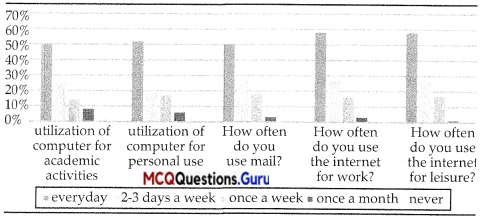
(2) At present, many schools and universities have been implementing internet-based learning, as it supplements the conventional teaching methods. The internet provides a wide variety of references and information to academics as well as scientific researchers. Students often turn to it to do thei r academic assignments and projects.
(3) However, research on Internet is very different from traditional library research, and the differences can cause problems. The Internet is a tremendous resource, but it must be used carefully and critically.
(4) According to a 2018 Academic Student e-book Experience Survey, conducted by LJ’s research department and sponsored by EBSCO, when reading for pleasure, almost 74% of respondents said they preferred print books for leisure whereas, 45 % of respondents chose e-books rather than the printed versions, for research or assignments.
(5) When asked what e-book features make them their favourite for research, the respondents were clear. Having page numbers to use in citations, topped the list (75%); followed by the ability to resize text to fit a device’s screen (67%); the ability to bookmark pages, highlight text, or take notes for later reference (60%); downloading the entire e-book (57%); and allowing content to be transferred between devices (43%) were the varied responses.
Based on your understanding of the above passage, answer any six of the questions given below by choosing the most appropriate option:
Question 1.
The word ‘tremendous’, as used in paragraph 3, means the same as
(A) expensive
(B)renowned
(C) Innovative
(D) incredible
Answer:
(D) incredible
Question 2.
Based on the graphical chart in the passage, choose the option that correctly states the depiction of internet usage for work and for leisure, for once a month.
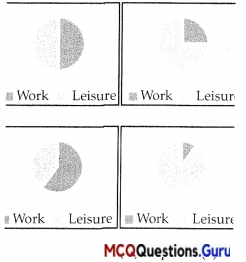
(A) Option (1)
(B) Option (2)
(C) Option (3)
(D) Option (4)
Answer:
(C) Option (3)
![]()
Question 3.
Based on the given graphical representation of data in the passage, choose the option that lists the statements that are TRUE with respect to the usage of email.
1. The everyday usage of email is more than the everyday usage of computer for personal use.
2. About 18% people use email once a week.
3. There are a smaller number of email users using it 2-3 times a week than the ones using it once a month.
4. Less than 5% of people never use the email.
(A) 1 and 3
(B) 2 and 4
(C) 1 and 2
(D) 3 and 4 ‘
Answer:
(B) 2 and 4
Question 4.
Based on the given graphical chart, pick the option that lists the area of zero response from respondents.
(A)Never using the internet for work and leisure
(B) Daily use of the computer for academic activities
(C) Writing and receiving emails once a week
(D) Using the internet for personal tasks once a month
Answer:
(A)Never using the internet for work and leisure
![]()
Question 5.
In the cartoon, the student’s reaction reveals that he is

(A) indignant
(B) apologetic
(C) obedient
(D) inquisitive
Answer:
(A) indignant
Question 6.
Which of the following statements is NOT substantiated by information in paragraph 4?
(A) About three-quarters of the respondents preferred print books for recreational reading.
(B) A little less than a 50% of the respondents voted for e-books for research or assignments.
(C) More than 50%. respondents stated enjoying both versions of books for leisure reading.
(D) The survey was intended for understanding the e-book experience among students.
Answer:
(C) More than 50%. respondents stated enjoying both versions of books for leisure reading.
Question 7.
Arrange the given e-book features preferred for research from the least favourite to the most favourite-
1. downloading the entire e-book
2. choosing page numbers in citations
3. highlighting text
4. resizing text to fit screen
(A) 1,3,4,2
(B) 3,2,1,4
(C) 2, 4, 3,1
(D) 4,1, 2, 3
Answer:
(A) 1,3,4,2
![]()
II. Read the passage given below:
(1) Andy Dehart is a shark expert and TV presenter who lives in the United States of America. He has had a lifelong interest in sharks and is always trying to look for ways to educate the public about them. Many people think that sharks have little or no intelligence, but Andy points out that recent studies have shown that many shark species possess powerful problem-solving abilities and social skills. “Sharks do not want to attack humans,” he asserts. “There is no shark species that eats humans as part of its regular diet. In most shark attack cases. The shark leaves after realising that it has mistakenly bitten a human and not its intended prey.”
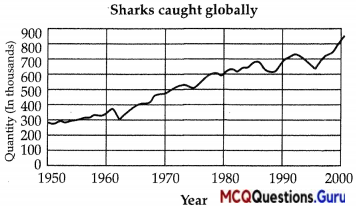
(2) In Andy’s opinion, all shark fishing should be stopped until the shark populations have had time to grow again. We then need to do a better job of managing the fishing of sharks. However, even if the direct fishing of sharks is stopped, many will still be killed when they are caught up in the nets of boats fishing for other species of fish.
(3) When Andy was a boy, his father worked for a national oceanic organisation, and Andy travelled with him all over the Caribbean. He grew up by the coast and he has been connected with the sea for as long as he can remember. He also lived near one of the best aquariums in America. Andy then went on to build a career working with sharks in an aquarium environment. More recently, he has been involved with television and the making of programmes about the sharks.
(4) Andy and his wife had their first child two years ago. They were amused and amazed to see what extent their work with animals has proved to be useful in bringing up their daughter. They know how to observe her behaviour and teach her how to do things by rewarding her.
(5) Andy loves sharks and is very passionate about their survival and protection. He feels extremely lucky to have had opportunities working at the National Aquarium and the television station which presents the Nature Channel. He never wastes a moment in either place that could be spent educating people about sharks. He does admit that it is probably not possible for everyone to love sharks as he does. However, he does hope to persuade people personally or through the media to respect sharks and the critical role they play in our environment. His main objective is to keep spreading awareness that sharks are not dangerous man-eaters but essential creatures in our oceans, as they provide ecological balance and help to control other species.
Based on your understanding of the above passage, answer any six of the questions given below by choosing the most appropriate option:
Question 1.
What evidence is there that the sharks may be intelligent?
(A) Their problem solving and social skills
(B) Their social skills
(C) Eat humans
(D) Their oceanic organisation
Answer:
(A) Their problem solving and social skills
Question 2.
Why does Andy believe that sharks only attack humans by mistake?
(A) They don’t eat humans as a part of their diet.
(B) They leave after realising that it has mistakenly bit humAnswer:
(C) Human is not its intended prey.
(D) All of these
Answer:
(D) All of these
Question 3.
How did Andy’s work help him when bringing up his daughter?
(A) They know how to teach her things by rewarding her.
(B) They taught her by reprimanding her.
(C) They taught her to observe behaviour of others.
(D) Connection of animals to the daughter’s keenness.
Answer:
(A) They know how to teach her things by rewarding her.
Question 4.
According to the graph, how many sharks were caught in 1990?
(A) 650,000
(B) 700,000
(C) 700
(D) 800
Answer:
(B) 700,000
Question 5.
How does Andy hope to educate people about sharks?
(A) Through his work at the National Aquarium
(B) Through the media
(C) Through the Nature Challenge
(D) All of these
Answer:
(D) All of these
![]()
Question 6.
From the given pictorial representations, choose the option which represent the total percentage of students responding Telephone and Text Message?
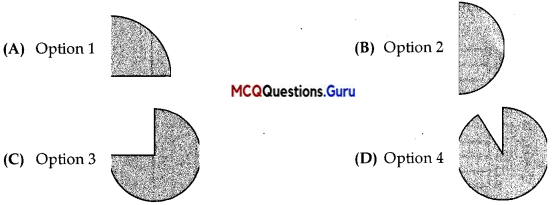
Answer:
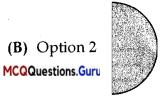
Question 7.
Even after the ascending trend, in which year the number of number of sharks caught remained the same?
(A) 1970
(B) 1975
(C) 1980
(D) 1985 .
Answer:
(A) 1970
III. Read the passage given below:
(1) A survey was conducted on student preferences with respect to the most popular means of communication among them. Surprisingly, the students didn’t seem much interested in traditional means of communication. Only 7% were interested in writing letters to their friends or kins as compared to those who preferred e-mails.

(2) However, the chief competition is between users of Instant Messenger and those of telephone lines. The users of fax line as a medium of communication are only marginal. There are supporters of text messaging also. Overall, the survey had a mixed response from the students.
(3) The students have indicated that they out of the choices given in the survey questionnaire, they have indicated the most preferred option. But, most of the students are of the view that video calling needs to be mentioned in the questionnaire as it is the most effective and most popular means of communication. Further, voice messages are the second most preferred means of communication.
Based on your understanding of the above passage, answer any six of the questions given below by choosing the most appropriate option:
Question 1.
Which means of communication is liked by more than one-fourth of the students?
(A) Telephone
(B) Text message
(C) E-mail
(D) Fax
Answer:
(A) Telephone
Question 2.
Which means of communication is liked by exactly one-tenth of the students?
(A) Letter
(B) Fax
(C) E-mail
(D) Letters
Answer:
(B) Fax
![]()
Question 3.
How much of the students prefer either of telephones or text messages as medium of communication?
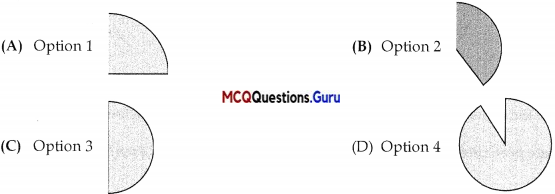
Answer:

Question 4.
What is the overall response of the students to the survey?
(A) Biased
(B) Unbiased
(C) Mixed
(D) None of these
Answer:
(C) Mixed
![]()
IV. Read the passage given below:
(1) Human life changes constantly over time. Mobile phones were previously seen only among few high-class people and were considered as something lavish. Then slowly, even the average or the common men on the street, like a cobbler or vegetable vendor, could be seen having a cell-phone. In the world today, even young kids and school going children are found busily chatting away on their mobile phones. Now kids as young as seven and eight too have started owning a mobile phone. Welcome to the new age world!
(2) Studies recommend that mobile phones should only be given to children above sixteen years of age. Children below the age of sixteen should not be given mobile phones since their brain is too sensitive to withstand the effects of mobile radiation. Since the tissues in the brain and body are still developing, these radiations can cause cell damage. Due to the absorption of radiation, children can have severe health issues. Although, adults also get affected by these radiations it will be more severe in children because of increased absorption of these radiation levels. Experts also believe there is a link between childhood cancer and mobile phone usage among children.
(3) A survey was conducted to get the views of the parents and teachers as to whether the children below sixteen years of age should be given mobiles or not was conducted. The responses received were formulated into a pie diagram as under:
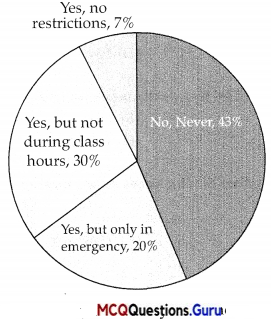
Based on your understanding of the above passage, answer any six of the questions given below by choosing the most appropriate option:
Question 1.
What is the minimum age prescribed by the studies to give mobile phones to children?
(A) Ten
(B) Twelve
(C) Fourteen
(D) Sixteen
Answer:
(D) Sixteen
Question 2.
Which of these diseases is linked to mobile phone usage?
(A) Childhood obesity
(B) Childhood retardation
(C) Childhood cancer
(D) All of these
Answer:
(C) Childhood cancer
![]()
Question 3.
What percentage of parents and teachers are against giving mobile phones to students in any situation?
(A) 7%
(B) 20%
(C) 30%
(D) 43% .
Answer:
(D) 43% .
Question 4.
Which of these categories is represented by this pictorial representation?

(A) Yes, no restrictions
(B) Yes, but not during class hours
(C) Yes, but only in emergency
(D) No, never
Answer:
(C) Yes, but only in emergency
![]()
Question 5.
Pick out the word or phrase from the passage which means the same as ‘extravagant’ (used in Para 1).
(A) Ffigh-class
(B) Lavish
(C) Vendor
(D) Busily
Answer:
(B) Lavish
Question 6.
Pick out the word or phrase from the passage which means opposite to ‘contracting’ (Para 2).
(A) Recommending
(B) Developing
(C) Absorbing
(D) Linking
Answer:
(B) Developing
Question .7.
The word ‘conducted’ used in Para 3 here means:
(A) Steered
(B) Sold
(C) Planned Option
(D) Finalised
Answer:
(A) Steered
![]()
V. Read the passage given below:
(1) Understanding how hibernators, including ground squirrels, marmots and bears, survive their long winter’s naps may one day offer solutions for problems such as heart disease, osteoporosis and muscular dystrophy.
(2) Nearly everything about the way an animal’s body works changes when it hibernates and preparations start weeks or months in advance. The first order of business is to fatten up.
(3) “Fat is where it’s at for a hibernator/’ says Matthew Andrews, a molecular biologist at the University of Minnesota Duluth who studies 13-lined ground squirrels. “You bring your own lunch with you”. Packing lunch is necessary because the animals go on the world’s strictest diet during the winter, surviving entirely off their white fat. “They have their last supper in October; they don’t eat again until March,” Andrews says.
(4) Recent analyses revealed that Scandinavian brown bears spend the summer with plasma 69 cholesterol levels considered high for humans; those values then increase substantially for hibernation, Frobert and his colleagues reported. These “very, very fat” bears with high cholesterol also get zero exercise during hibernation. Lolling about in the den pinches off blood vessels, contributing to sluggish circulation. “That cocktail would not be advisable in humans,” Frobert says. It’s a recipe for hardened arteries, putting people at risk for heart attacks and strokes.
(5) Even healthy young adult humans can develop fatty streaks in their arteries that make the blood vessels less flexible, but the bears don’t build up such artery-hardening 69 streaks. “Our bears, they had nothing,” Frobert says. It’s not yet clear how the bears keep their arteries flexible, but Frobert hopes to find some protective molecule that could stave off hardened arteries in humans as well.
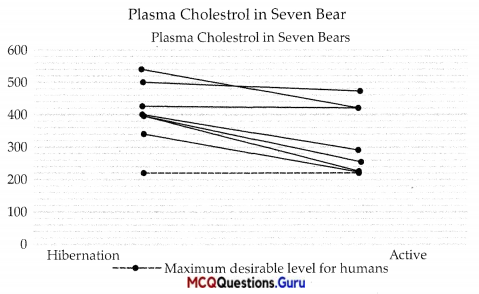
Based on your understanding of the above passage, answer any six of the questions given below by choosing the most appropriate option:
Question 1.
Study of hibernators are likely to offer solutions for problems like
(A) Osteoporosis
(B) Heart disease
(C) Muscular dystrophy
(D) All of these
Answer:
(D) All of these
Question 2.
How do animals survive during winters?
(A) Off their white fat
(B) Hunting small animals
(C) Eating plant leaves and fruits
(D) Eating packed lunch
Answer:
(A) Off their white fat
![]()
Question 3.
What type of brown bears spend summer
(A) American
(B) Asian
(C) Armenian
(D) Scandinavian
Answer:
(C) Armenian
Question 4.
How much exercise is done by animals during hibernation?
(A) Zero
(B) Less than average
(C) Regular
(D) More than average
Answer:
(A) Zero
![]()
Question 5.
What is the maximum desirable level of cholesterol for human beings?
(A) 0
(B) 200
(C) 232
(D) 356
Answer:
(C) 232
Question 6.
Which statement about the effect of hibernation on the bears is best supported by the graph?
(A) Only one of the bears did not experience an appreciable change in its total plasma cholesterol level.
(B) Only one of the bears experienced a significant increase in its total plasma cholesterol level.
(C) All of the bears achieved the desirable plasma cholesterol level for humAnswer:
(D) The bear with the lowest total plasma cholesterol level in its active state had the highest total plasma cholesterol level during hibernation.
Answer:
(A) Only one of the bears did not experience an appreciable change in its total plasma cholesterol level.
Question 7.
What is the range of the cholesterol level as indicated by the graph?
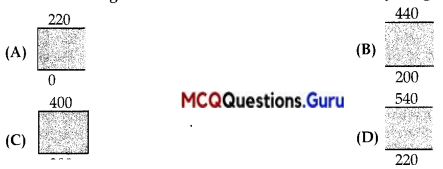
Answer:
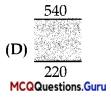
VI. Read the passage given below:
(1) Most of us know that smoking causes cancer, lung disease, heart disease, can shorten life by 10 years or more and can cost a smoker thousands of rupees a year. So, why are people still smoking? The answer, in a word, is addiction.
(2) Smoking is a hard habit to break because tobacco contains the very addictive chemical nicotine. The body and mind quickly get used to the nicotine in cigarettes. Soon, a person needs to have it just to feel normal.
(3) People start smoking for different reasons. Some think it looks cool. Others start because their family members or friends smoke. Almost all adult tobacco users started before they were 18 years old. Most never expected to become addicted.
(4) Many of the chemicals in cigarettes, like nicotine and cyanide, are poisons that can kill in high doses. The body is smart. It goes on the defence when it’s being poisoned. First time smokers often feel pain or burning in their throat and lungs, and some even cough vigorously the first few times they try tobacco. Over time, smoking leads to health problems such as heart disease, stroke, lung damage and many types of cancer — including lung, throat, stomach, and bladder cancer.
(5) A survey was conducted to collect views of the people whether smoking should be allowed or not in public places. The results of the responses received have been depicted in the form of pie chart here.
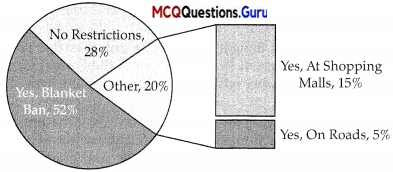
Based on your understanding of the above passage, answer any six of the questions given below by choosing the most appropriate option:
Question 1.
Which of these can be caused by smoking?
(A) Heart disease
(B) Cancer
(C) Lung disease
(D) All of these
Answer:
(D) All of these
![]()
Question 2.
What is the basic reason for continuing smoking
(A) Looking cool
(B) Keeping pace with the society
(C) Addiction
(D) None of these
Answer:
(C) Addiction
Question 3.
Which of these is defence system that appears in
(A) Vomiting
(B) Burning in lungs
(C) Dizziness
(D) All of these
Answer:
(B) Burning in lungs
![]()
Question 4.
Which of these types of cancers is likely to be caused by smoking?
(A) Lung cancer
(B) Burning in lungs
(C) Breast cancer
(D) Bone cancer
Answer:
(A) Lung cancer
Question 5.
From the given pictorial representation, choose the option that correctly states the percentage of persons who are of the view that smoking should not be allowed on roads.

Answer:

Question 6.
From the given pictorial representation, choose the option that correctly states the percentage of persons who say that smoking should have a blanket ban as compared to those supporting no restrictions on smoking.
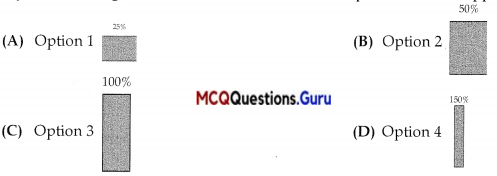
Answer:

Question 7.
What is the meaning in which ‘cool’ has been used in Para 3 of the passage?
(A) Chill
(B) Unfriendly
(C) Calm
(D) Stylish
Answer:
(D) Stylish
![]()
VII. Read the passage given below:
(1) Royal Bengal Tiger is the largest, fiercest, and powerful member of the Big Cat family in India. Royal Bengal Tigers, also known as Indian Tiger and Bengal Tiger, constitute a large population of the tiger family in the world. It is the National animal of India and is found mostly in India, China, Bhutan, Bangladesh, and Burma.
(2) The biological name of this Big Cat is Panthera Tigris, which comes under the Felidae family under Mammalia category.
(3) No two Bengal tigers look alike! Every Bengal Tigers has a unique stripe pattern. Their colour ranges from yellow to light orange, with stripes from dark brown to black. Some of the Bengal Tigers are white in colour. The tail is orange in colour with black rings. Unlike the other white tigers that have blue eyes, Bengal tigers have yellow irises. They live for 10 to 15 years.
(4) Being fierce in nature, Royal Bengal Tigers are not much friendly in nature and live a solitary life, except in winters when they can be seen in a group of 3 or 4. Bengal tigers are fast runners and good swimmers. Tigers attack their prey in a stealth mode. They are usually spotted in swamps, mangroves, and grasslands.
(5) Royal Bengal Tigers have very sharp memories; they never forget the faces. Their memory is sharper than humans and other animals.
(6) We can find the largest population of Royal Bengal Tigers in India. As per the latest tiger census report 2017, there are 3,786 Royal Bengal tigers in India. India has more than 75% of the total tiger population in the world. Along with India, neighbouring countries to India holds a somewhat decent population of Royal Bengal Tiger in the world. The latest census of the tigers in India and neighbouring countries are shown in the table.
| Name of country | Minimum | Maximum |
| 1. Bangladesh | 300 | 460 |
| 2. Bhutan | 80 | 460 |
| 3. China | 30 | 35 |
| 4. India | 2500 | 3800 |
| 5. Nepal | 150 | 250 |
(7) To know about the latest tiger population is always government’s concern, as they want to save this majestic animal from getting extinct. India has lost 97% of its Royal Bengal Tiger population in the last century. The main reason is Hunting, Poaching, Urbanization, Habitat loss and Illegal wildlife Trade. Poaching means to illegally trade the tiger made products like tiger skin, tiger made jewellery, etc. These skin and jewellery are sold for millions in the international market. Poaching has reduced the number of tigers to just 3,800 from 1,00,000 in the starting of the 20th century.Based on your understanding of the above passage, answer any six of the questions given below by choosing the most
Question 1.
The biological name of Bengal Tiger is Panthera ————.
(A) Tiger
(B) Tigress
(C) Tigris
(D) Tigers
Answer:
(C) Tigris
![]()
Question 2.
Pick out the characteristic (s) of Bengal Tigers.
(A) Fast runners
(B) Attack in stealth mode
(C) Good swimmers
(D) All of these
Answer:
(D) All of these
Question 3.
When was the latest survey of tigers conducted according to the passage?
(A) 2010
(B) 2017
(C) 2019
(D) 2020
Answer:
(B) 2017
Question 4.
The number of tigers in —————– ranges from 80 to 460.
(A) Bangladesh
(B) Bhutan
(C) China
(D)Nepal
Answer:
(B) Bhutan
![]()
Question 5.
From the given pictorial representation, choose the option that correctly states the approximate percentage of total tigers in the world which are found in India.
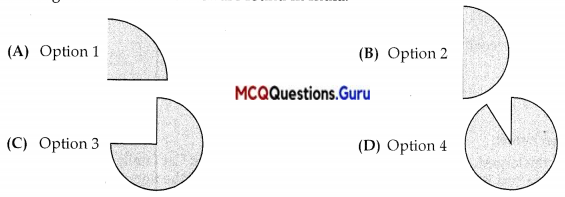
Answer:
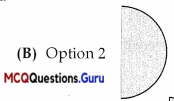
Question 6.
Which pair of countries has approximately same number of maximum tigers?
(A) Nepal and Bangladesh
(B) Bhutan and Bangladesh
(C) China and Nepal
(D) Bangladesh and India
Answer:
(B) Bhutan and Bangladesh
Question 7.
Pick out the option(s) that correctly state the reason for reduction in the population of the tigers?
(A) Poaching
(B) Epidemic
(C) Climatic changes
(D) Soil erosion
Answer:
(A) Poaching
![]()
VIII. Read the passage given below:
(1) Whaling is the hunting of whales for food and oil. Whaling was once conducted around the world by seafaring nations in pursuit of the giant animals that seemed as limitless as the oceans in which they swam. However, since the mid-20lh century, when whale populations began to drop catastrophically, whaling has been conducted on a very limited scale. It is now the subject of great scrutiny, both by formal regulatory bodies and by non-governmental organizations.
(2) Whaling has been documented in many sources—from Neolithic cave art to present-day annual reports of the International Whaling Commission. Prehistoric inhabitants of far northern coastal regions, lacking adequate agriculture, developed successful whaling techniques using Stone Age weapons. By the time the Inuit (Eskimo) of eastern and western North America were first encountered by Europeans, they had already mastered whale hunting, and many Inuit methods were used as recently as 1900. For the Inuit, a captured whale supplied food, fuel, and light; sinews provided cordage, and bones were used for tools and construction.
Not until the 20th century, when floating factory ships came into use, did other civilizations succeed in the same efficient use of the whole carcass. Elsewhere, from the first intensive hunting of whales in the early 17th century to the early 20th century, little more than blubber and baleen was used, and the remainder of the animal was discarded. Each successive discovery of new whaling grounds resulted in the near disappearance of a particular species. The efficiency of modern hunting methods hastened this trend.
(3) International whaling developed in stages that were determined by changing demand, diminishing stocks, and advancing technology. A lengthy primitive stage eventually led to commercial whaling; new markets and technical and chemical advances then produced modern whaling, which led to virtual extinction of the quarry and a return to a primitive stage. The commercial stages were dominated overwhelmingly by northern Europeans and Americans— first the Dutch, then the British and Americans, and finally the Norwegians and British. Only at the very end, when Europeans no longer found the trade profitable, did they surrender the remaining whales to the Russians and Japanese.

Based on your understanding of the above passage, answer any six of the questions given below by choosing the most appropriate option:
Question 1.
Around when did the whale populations start dropping largely?
(A) Beginning of 19th century
(B) Mid 20lh century
(C) Early 21sl century
(D) Just recently
Answer:
(B) Mid 20lh century
![]()
Question 2.
What is the earliest documented source of whaling?
(A) Paleolithic cave art
(B) Mesolithic cave art
(C) Neolithic cave art
(D) Monolithic cave art
Answer:
(C) Neolithic cave art
Question 3.
Who are Inuits?
(A) The whales predominantly found in Antarctica
(B) The people predominantly found in Antarctica
(C) The people living in cold areas of eastern and western North America
(D) The people living in cold areas of Siberian desert in Russia
Answer:
(C) The people living in cold areas of eastern and western North America
Question 4.
Who started the commercial whaling?
(A) Dutch
(B) British
(C) Russians
(D) Japanese
Answer:
(A) Dutch
![]()
Question 5.
Which of these pictorials represents the correct relationship between hunting of Minke whales and Sei whales in 1990?
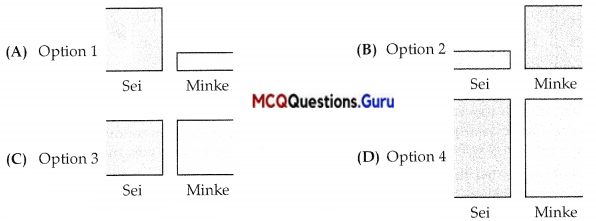
Answer:

Question 6.
Which of these pictorials represents the correct relationship between hunting of Minke whales and Sei whales in 1995?

Answer:

Question 7.
In the year 1985, the difference between the number if Minke Whales hunted and Sei Whales hunted was
(A) 1000
(B) 15000
(C) 16000
(D) 14000
Answer:
(D) 14000